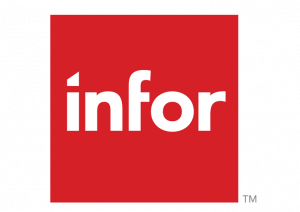No matter how massive, minute or complex an agency’s mission, each one has a common purpose: They’re in the business of people.
But the nature of that business has drastically changed in response to COVID-19. Many agencies are operating in a virtual environment and can’t rely on instincts or in-person interactions to manage a workforce they can’t physically see.
Especially now, they need a data-driven, technology-enabled approach to matching people with government priorities, said Marcus Mossberger, Industry and Solution Strategy Director at Infor. “We look at the cognitive, cultural and behavioral data of individuals to make better decisions for and about our people.”
Infor specializes in talent management software that uses behavioral and performance data to select, develop and retain the right people — a space that government leaders are increasingly tapping into.
Mossberger explained how behavioral data, which can be used to analyze individual characteristics such as humility and acceptance of authority, can help agencies better understand employees, their needs and how their talents align with the mission. Behavioral data can help agencies:
1. Respond to the short and long-term implications of remote work on employees.
“We’re in a bit of a new world,” Mossberger said. “Candidly, I don’t think we’re going back to any degree of normalcy for the near future.”
Operating under this assumption, how might you use data to better understand employees’ adaptiveness to remote work for an extended period or indefinitely?
“There are certain behavioral characteristics that predict people may be a better fit for the remote work lifestyle,” he said. “Think of things like self-discipline, pace and need for recognition.”
Technology can help agencies think through these scenarios and make suggestions for interventions and positive reinforcements when needed.
2. Strategically plan for workforce reskilling and future jobs.
There’s no question that the federal workforce will be doing a lot more around reskilling in the future. Reskilling involves learning a completely new skill set based on a demonstrated aptitude.
“When you look at the future, we’re preparing generations for jobs that don’t even exist yet,” Mossberger said. “In today’s environment, having to do it virtually adds another factor to consider.”
Behavioral analytics can help agencies identify transferable skills across the workforce. Although it’s difficult to predict every skill that will be required, employees who exude emotional intelligence and are good at problem-solving are often ideal candidates for reskilling.
3. Understand various teams and how they operate most efficiently.
How teams functioned in the office isn’t an absolute indication of how they will operate in a remote environment. Having behavioral data to support or refute assumptions about team dynamics is key.
Understanding what variables, such as skill sets and environment, impact team dynamics is crucial for hiring as well.
COVID-19 has made widely dispersed workforces the future of agencies, Mossberger said. Behavioral data can help agencies understand what’s best for their employees and more readily adapt to change.
This article is an excerpt from GovLoop’s recent guide, “Your Professional Development Playbook.” Download the full guide here.






Leave a Reply
You must be logged in to post a comment.